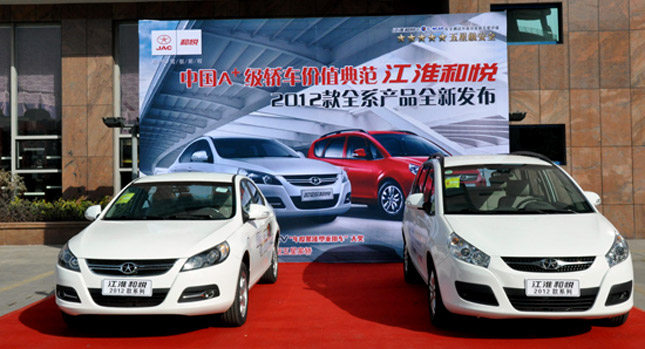China may be one of the largest car manufacturers in the world, but its local brands haven’t really managed to infiltrate any major markets.
And while Europe and North America continue to be out of their reach (for the time being, at least) for a great number of reasons ranging from their vehicles’ sub-par quality and safety credentials to the fact that some brands blatantly copy Western automakers’ models, certain countries in Latin America are seeing a surge in Chinese car sales.
 “Little by little, I heard favorable comments. It took a long time to decide, but I’m risking it,” Lima taxi driver Mario Segura, told the Detroit News. Segura had just dropped $12,000 on a brand-new Fullwin XR sedan, half the cost of a comparable Fiat or Renault.
“Little by little, I heard favorable comments. It took a long time to decide, but I’m risking it,” Lima taxi driver Mario Segura, told the Detroit News. Segura had just dropped $12,000 on a brand-new Fullwin XR sedan, half the cost of a comparable Fiat or Renault.
Another example from Peru is Luis Lina, a doctor by profession, who decided against buying a second-hand Japanese model after he was convinced by relatives to visit a JAC dealership. We’ll remind you that JAC is the maker of the Ford F-150 pickup truck clone.
“We realized for the same money that we’d pay for a crummy secondhand car that inspired no confidence, we could have a brand-new Chinese car with a two-year warranty,” said Luna after putting down $16,000 for JAC B-Cross family wagon. “I’m totally convinced this is the right decision.”
According to the report, Chinese car brands were introduced in Peru in 2006 and now, one in six new cars (about 17 percent of the market) sold in the country is a Chinese make. There are approximately 90 (!) different Chinese brands in Peru right now.
So what makes Chinese cars such a bargain? “Start with labor,” says auto industry expert with consultants IHS Automotive, Guido Vildozo, who adds that your average Chinese auto worker gets paid $300 to $400 a month, compared to $2,000 to $3,000 in Mexico and $5,000 to $7,000 in the USA.
And that’s not the only advantage Chinese companies have over other automakers. Jian Sun, a partner with AT Kearney business consultants in Shanghai, told the Detroit daily that Chinese carmakers also benefit from “reverse engineering, or design and mechanical imitation”, as a great number of brands simply copy parts to reduce the costs of development.
In addition, many countries like Peru don’t have stringent emission, fuel economy or safety regulations like the West does, which also helps reduce costs.
Story References: DetNews
PHOTO GALLERY
VIDEO














